Casio G-Shock GW-9400-3ER Handleiding
Bekijk gratis de handleiding van Casio G-Shock GW-9400-3ER (14 pagina’s), behorend tot de categorie Horloge. Deze gids werd als nuttig beoordeeld door 49 mensen en kreeg gemiddeld 3.5 sterren uit 25 reviews. Heb je een vraag over Casio G-Shock GW-9400-3ER of wil je andere gebruikers van dit product iets vragen? Stel een vraag
Pagina 1/14

MO1408-EC © 2013 CASIO COMPUTER CO., LTD.
E-1
ENGLISH
Congratulations upon your selection of this CASIO watch.
Applications
The built-in sensors of this watch measure direction, barometric pressure, temperature and altitude.
Measured values are then shown on the display. Such features make this watch useful when hiking,
mountain climbing, or when engaging in other such outdoor activities.
Warning !
• The measurement functions built into this watch are not intended for taking measurements that
require professional or industrial precision. Values produced by this watch should be considered
as reasonable representations only.
•
When engaging in mountain climbing or other activities in which losing your way can create a
dangerous or life-threatening situation, always use a second compass to confi rm direction readings.
• Note that CASIO COMPUTER CO., LTD. assumes no responsibility for any damage or loss
suffered by you or any third party arising through the use of this product or its malfunction.
E-2
Important!
• Your watch’s Altimeter Mode calculates relative altitude based on changes in barometric pressure
measurement by its pressure sensor. For more information, see page E-36 and E-48.
• Immediately before embarking or otherwise taking altitude readings, be sure to specify a reference
altitude. If you don’t the readings produced by the watch probably will not be very accurate. For more
information, see “To specify a reference altitude value” (page E-44).
E-3
About This Manual
• Depending on the model of your watch, digital display text appears
either as dark fi gures on a light background, or light fi gures on a dark
background. All examples in this manual are shown using dark fi gures
on a light background.
• Button operations are indicated using the letters shown in the
illustration.
• Note that the product illustrations in this manual are intended for
reference only, and so the actual product may appear somewhat
different than depicted by an illustration.
E-4
Things to check before using the watch
1. Check the battery power level.
Is H or M indicated by the battery power indicator (page E-11)?
Go to step 2.
Power is low. Charge the watch by placing it in a location
where it is exposed to light. For details, see “Charging the
Watch” (page E-10).
NO YES
YES
Does any one of the following conditions exist?
• Battery power indicator indicates is flashing on the L and LOW
display.
• CHG is flashing on the display.
• The face is blank.
The watch is charged
sufficiently.
For details about
charging, see
“Charging the Watch”
(page E-10).
NEXT
Battery power
indicator
E-5
2. Check the Home City and the daylight saving time (DST) setting.
Use the procedure under “To confi gure Home City and summer time settings” (page E-31) to confi gure
your Home City and daylight saving time settings.
Important!
• Proper time calibration signal reception, and World Time Mode and Sunrise/Sunset Mode data depend
on correct Home City, time, and date settings in the Timekeeping Mode. Make sure you confi gure
these settings correctly.
3. Set the current time.
• To set the time using a time calibration signal
See “To get ready for a receive operation” (page E-17).
• To set the time manually
See “Confi guring Current Time and Date Settings Manually” (page E-33).
The watch is now ready for use.
• For details about the watch’s radio controlled timekeeping feature, see “Radio Controlled Atomic
Timekeeping” (page E-15).
E-6
Contents
E-3 About This Manual
E-4 Things to check before using the watch
E-10 Charging the Watch
E-14 To recover from the sleep state
E-15 Radio Controlled Atomic Timekeeping
E-17 To get ready for a receive operation
E-19 To perform manual receive
E-22 To check the latest signal reception results
E-22 To turn auto receive on or off
E-24 Mode Reference Guide
E-29 Timekeeping
E-30 Using Date/Time Records
E-31 Confi guring Home City Settings
E-31 To confi gure Home City and summer time settings
E-33 Confi guring Current Time and Date Settings Manually
E-33 To change the current time and date settings manually
E-35 Specifying Temperature, Barometric Pressure, and Altitude Display Units
E-35 To specify temperature, barometric pressure, and altitude display units
E-7
E-36 Using the Altimeter Mode
E-37 To select the altitude screen format
E-37 To select the altitude auto reading interval
E-39 To take altitude readings
E-42 To specify the altitude differential start point
E-43 To use the altitude differential value
E-44 To specify a reference altitude value
E-45 To save a reading manually
E-51 Precautions Concerning Simultaneous Altitude and Temperature Readings
E-52 Taking Direction Readings
E-52 To perform 2-point calibration
E-54 To take a direction reading
E-58 To perform magnetic declination correction
E-61 Taking Barometric Pressure and Temperature Readings
E-61 To take barometric pressure and temperature readings
E-66 To enable or disable the barometric pressure change alert
E-68 To calibrate the pressure sensor and the temperature sensor
E-70 Viewing Memory Records
E-70 To view data in watch memory
E-74 To delete all saved data
E-74 To delete a specifi c record
Operation Guide 3410

E-8
E-75 Checking the Current Time in a Different Time Zone
E-75 To enter the World Time Mode
E-75 To view the time in another time zone
E-76 To specify standard time or daylight saving time (DST) for a city
E-77 Using the Stopwatch
E-77 To enter the Stopwatch Mode
E-77 To perform an elapsed time operation
E-77 To pause at a split time
E-78 To measure two fi nishes
E-79 Using the Countdown Timer
E-79 To enter the Countdown Timer Mode
E-79 To specify the countdown start time
E-80 To perform a countdown timer operation
E-80 To stop the alarm
E-81 Using the Alarm
E-81 To enter the Alarm Mode
E-82 To set an alarm time
E-83 To turn an alarm and the Hourly Time Signal on and off
E-83 To stop the alarm
E-9
E-84 Looking up Sunrise and Sunset Times
E-84 To view sunrise and sunset times
E-85 To view the sunrise/sunset time for a particular date
E-86 To look up the sunrise and sunset times for a specifi c location
E-88 Illumination
E-88 To turn on illumination manually
E-88 To change the illumination duration
E-90 To turn the auto light switch on and off
E-92 Other Settings
E-92 To turn the button operation tone on and off
E-93 To turn Power Saving on or off
E-94 Troubleshooting
E-100 Specifi cations
E-10
Charging the Watch
The face of the watch is a solar panel that generates power from light. The generated power charges a
built-in rechargeable battery, which powers watch operations. The watch charges whenever it is exposed
to light.
Charging Guide
Whenever you are not wearing the
watch, leave it in a location where it
is exposed to light.
• Best charging performance is
achieved by exposing the watch to
the strongest light available.
When wearing the watch, make sure
that its face is not blocked from light
by the sleeve of your clothing.
• The watch may enter a sleep state
(page E-14) if its face is blocked
by your sleeve even only partially.
Warning!
Leaving the watch in bright light for charging can cause it to become quite hot.
Take care when handling the watch to avoid burn injury. The watch can become particularly hot
when exposed to the following conditions for long periods.
• On the dashboard of a car parked in direct sunlight
• Too close to an incandescent lamp
• Under direct sunlight
E-11
Important!
• Allowing the watch to become very hot can cause its liquid crystal display to black out. The
appearance of the LCD should become normal again when the watch returns to a lower temperature.
• Turn on the watch’s Power Saving function (page E-14) and keep it in an area normally exposed to
bright light when storing it for long periods. This helps to ensure that power does not run down.
• Storing the watch for long periods in an area where there is no light or wearing it in such a way that it is
blocked from exposure to light can cause power to run down. Expose the watch to bright light
whenever possible.
Power Levels
You can get an idea of the watch’s power level by observing the battery power indicator on the display.
Important!
• If low battery power is indicated, expose the face of the watch to direct light to charge. At Level 5, the
battery is dead, which causes watch functions to stop, all data in watch memory to be deleted, and all
watch settings to return to their initial factory defaults.
Level Battery Power Indicator Function Status
1
(H) All functions enabled.
2
(M) All functions enabled.
Battery power
indicator
Battery power
indicator
E-12
Level Battery Power Indicator Function Status
3
(L)
l
l
l
l
l
l
l
l
l
l
l
l
l
l
l
l
l
l
l
l
l
l
l
l
l
l
l
l
l
l
l
l
l
l
l
l
l
l
l
l
l
l
l
l
l
l
l
l
l
l
Auto and manual receive, illumination,
beeper, and sensor operation disabled.
4
(CHG)
Except for the CHG (charge) indicator, all
functions and display indicators disabled.
5 – – – All functions disabled.
• The fl ashing LOW
indicator at Level 3 (L) tells you that battery power is very low, and that exposure to
bright light for charging is required as soon as possible.
• Display indicators reappear as soon as the battery is charged from Level 5 to Level 2 (M).
• Leaving the watch exposed to direct sunlight or some other very strong light source can cause the
battery power indicator to show a reading temporarily that is higher than the actual battery level. The
correct battery level should be indicated after a few minutes.
E-13
Power Recovery Mode
• Performing multiple sensor, illumination, or beeper operations during a short period may cause all of
the battery power indicators (H, M, and L) to start fl ashing on the display. This indicates that the watch
is in the power recovery mode. Illumination, alarm, countdown timer alarm, hourly time signal, and
sensor operations will be disabled until battery power recovers.
• Battery power will recover in about 15 minutes. At this time, the battery power indicators (H, M, L) will
stop fl ashing. This indicates that the functions listed above are enabled again.
• If all of the battery power indicators (H, M, L) are fl ashing and the
CHG (charge) indicator also is
fl ashing, it means the battery level is very low. Expose the watch to bright light as soon as possible.
• Even if battery power is at Level 1 (H) or Level 2 (M), the Digital Compass Mode, Barometer/
Thermometer Mode, or Altimeter Mode sensor may be disabled if there is not enough voltage available
to power it suffi ciently. This is indicated when all of the battery power indicators (H, M, L) are fl ashing.
• Frequent fl ashing of all of the battery power indicators (H, M, L) probably means that remaining battery
power is low. Leave the watch in bright light to allow it to charge.
Charging Times
Exposure Level (Brightness)
Daily
Operation
*1
Level Change *2
Level 5 Level 4 Level 3 Level 2 Level 1
Outdoor sunlight (50,000 lux) 5 min. 2 hours 16 hours 5 hours
Sunlight through a window (10,000 lux)
24 min. 7 hours 79 hours 22 hours
Daylight through a window on a
cloudy day (5,000 lux) 48 min. 12 hours 160 hours 43 hours
Indoor fl uorescent lighting (500 lux) 8 hours 175 hours – – – – – –
E-14
*1 Approximate amount of exposure time required each day to generate enough power for normal daily
operation.
*2 Approximate amount of exposure time (in hours) required to take power from one level to the next.
• The above exposure times all are for reference only. Actual exposure times depend on lighting
conditions.
• For details about the operating time and daily operating conditions, see the “Power Supply” section of
the Specifi cations (page E-103).
Power Saving
When turned on, Power Saving enters a sleep state automatically whenever the watch is left for a certain
period in an area where it is dark. The table below shows how watch functions are affected by Power
Saving.
• For information about enabling and disabling power saving, see “To turn Power Saving on or off” (page
E-93).
• There actually are two sleep state levels: “display sleep” and “function sleep”.
Elapsed Time in Dark Display Operation
60 to 70 minutes (display sleep) Blank, with
PS fl ashing Display is off, but all functions are enabled.
6 or 7 days (function sleep) Blank, with
PS not fl ashing All functions are disabled, but timekeeping is
maintained.
• The watch will not enter a sleep state between 6:00 AM and 9:59 PM. If the watch is already in a sleep
state when 6:00 AM arrives, however, it will remain in the sleep state.
• Power Saving is enabled only when the watch is in the Timekeeping Mode with the Day of the Week
screen displayed (page E-29) or in the World Time Mode (page E-75).
To recover from the sleep state
Move the watch to a well-lit area, press any button, or angle the watch towards your face for reading (page E-89).
E-15
Radio Controlled Atomic Timekeeping
This watch receives a time calibration signal and updates its time setting accordingly. However, when
using the watch outside of areas covered by time calibration signals, you will have to adjust the settings
manually as required. See “Confi guring Current Time and Date Settings Manually” (page E-33) for more
information.
This section explains how the watch updates its time settings when the city code selected as the Home
City is in Japan, North America, Europe, or China, and is one that supports time calibration signal
reception.
If your Home City Code setting is this: The watch can receive the signal from the transmitter
located here:
LIS, LON, MAD, PAR, ROM, BER, STO, ATH, MOW Anthorn (England), Mainfl ingen (Germany)
HKG, BJS Shangqiu City (China)
TPE, SEL, TYO Fukushima (Japan), Fukuoka/Saga (Japan)
HNL, ANC, YVR, LAX, YEA, DEN, MEX, CHI, NYC, YHZ,
YYT Fort Collins, Colorado (United States)
Important!
• The areas covered by MOW,HNL and ANC are quite far from the calibration signal transmitters, so
certain conditions may cause reception problems.
• When HKG or BJS is selected as the Home City, only the time and date are adjusted according to the
time calibration signal. You need to switch manually between standard time and daylight saving time
(DST) if required. See “To confi gure Home City and summer time settings” (page E-31) for information
about how to do this.
Operation Guide 3410

E-16
Approximate Reception Ranges
UK and German Signals
Anthorn
500 kilometers
1,500 kilometers
The Anthorn signal is
receivable within this area Mainflingen
North American Signal
Japanese Signals Chinese Signal
500 kilometers Changchun
Beijing
Shangqiu
Shanghai
Chengdu
Hong Kong
1,500 kilometers
2,000 miles
(3,000 kilometers)
600 miles
(1,000 kilometers)
Fort Collins
1,000 kilometers
Signals are receivable in the Taiwan area
when reception conditions are
g
ood.
For the Honolulu and Anchorage time zones, the
signal can be received when reception conditions
are favorable.
Fukuoka/Saga
500 kilometers
Fukushima
E-17
• Even when the watch is within range of a transmitter, signal reception may be impossible due to the
effects of geographic contours, structures, weather, the time of year, the time of day, radio interference,
etc. The signal becomes weaker at distances of approximately 500 kilometers, which means that the
infl uence of the conditions listed above becomes even greater.
• Signal reception may not be possible at the distances noted below during certain times of the year or
day. Radio interference may also cause problems with reception.
Mainfl ingen (Germany) or Anthorn (England) transmitters: 500 kilometers (310 miles)
Fort Collins (United States) transmitter: 600 miles (1,000 kilometers)
Fukushima or Fukuoka/Saga (Japan) transmitters: 500 kilometers (310 miles)
Shangqiu (China) transmitter: 500 kilometers (310 miles)
• As of December 2012, China does not use Daylight Saving Time (DST). If China does go to the Daylight
Saving Time system in the future, some functions of this watch may no longer operate correctly.
To get ready for a receive operation
1. Confi rm that the watch is in the Timekeeping Mode or World Time Mode. If it isn’t, use
D to enter the
Timekeeping Mode or World Time Mode (page E-26).
2. The antenna of this watch is located on its 12 o’clock side. Position the watch with 12 o’clock facing
towards a window as shown in the nearby illustration. Make sure there are no metal objects nearby.
• Signal reception normally is better at night.
• The receive operation takes from two to ten minutes, but
in some cases it can take as long as 20 minutes. Take
care that you do not perform any button operation or
move the watch during this time.
12 o’clock
or
12 o’clock
or
E-18
• Signal reception may be diffi cult or even impossible under the conditions described below.
Inside or
among
buildings
Inside a
vehicle
Near
household
appliances,
offi ce
equipment,
or a mobile
phone
Near a
construction
site, airport
Near
high-tension
power lines
Among or
behind
mountains
3. What you should do next depends on whether you are using auto receive or manual receive.
• Auto receive: Leave the watch over night in the location you selected in step 2. See “Auto Receive”
below for details.
• Manual receive: Perform the operation under “To perform manual receive” on page E-19.
Auto Receive
• With auto receive, the watch performs the receive operation each day automatically up to six times (up
to fi ve times for the Chinese calibration signal) between the hours of midnight and 5 a.m. (according to
the Timekeeping Mode time). When any receive operation is successful, none of the other receive
operations for that day are performed.
• When a calibration time is reached, the watch will perform the receive operation only if it is in the
Timekeeping Mode or World Time Mode. The receive operation is not performed if a calibration time is
reached while you are confi guring settings.
E-19
• You can use the procedure under “To turn auto receive on and off” (page E-22) to enable or disable
auto receive.
To perform manual receive
1. Use D to select the Receive Mode (R/C) as shown on page E-26.
2. Hold down A until RC Hold appears on the display and then
disappears.
• A signal level indicator (L1, , or L2 L3, see page E-21) will appear
on the display after reception starts. Do not allow the watch to
move and do not perform any button operation until GET or ERR
appears on the display.
• If the receive operation is successful, the reception date and time
appear on the display, along with the GET indicator.
The watch will return to the Timekeeping Mode if you press
D or
if you do not perform any button operation for about two or three
minutes.
Receiving
Receiving indicator
Receive successful
Receiving
Receiving indicator
Receive successful
E-20
• If the current reception fails but a previous reception (within the
last 24 hours) was successful, the display shows the receiving
indicator and the ERR indicator. If the ERR indicator only is
displayed (without the receiving indicator), it means that all of the
receive operations over the past 24 hours have failed.
The watch will return to the Timekeeping Mode without changing
the time setting if you press D or if you do not perform any button
operation for about two or three minutes.
Note
• You can interrupt a time calibration signal reception operation by
pressing any button.
Receive failed
If there was a previously
successful reception
Receive failed
If there was a previously
successful reception
E-21
Signal Level Indicator
During manual receive, the signal level indicator displays the signal level
as shown below.
Weak (Unstable) Strong (Stable)
The level indication will change in accordance with reception conditions
while reception is being performed.
As you watch the indicator, keep the watch in a location that best
maintains stable reception.
• Even under optimum reception conditions, it can take about 10
seconds for reception to stabilize.
• Note that weather, the time of day, surroundings, and other factors all
can affect reception.
E-22
To check the latest signal reception results
Enter the Receive Mode (page E-26).
• When receive is successful, the display shows the time and date that
receive was successful. - : - - indicates that none of the reception
operations were successful.
• To return to the Timekeeping Mode, press D.
To turn auto receive on or off
1. Enter the Receive Mode (page E-26).
2. Hold down E for at least two seconds. Release E after AUTO
appears. This is the setting screen.
• Note that the setting screen will not appear if the currently selected
Home City is one that does not support time calibration reception.
3. Press A to toggle auto receive between on (On ) and off (
OFF).
4. Press E to exit the setting screen.
On/Off statusOn/Off status
E-23
Radio-controlled Atomic Timekeeping Precautions
• Strong electrostatic charge can result in the wrong time setting.
• Even if a receive operation is successful, certain conditions can cause the time setting to be off by up
to one second.
• The watch is designed to update the date and day of the week automatically for the period January 1,
2000 to December 31, 2099. Updating of the date by signal reception will no longer be performed
starting from January 1, 2100.
• If you are in an area where signal reception is not possible, the watch keeps time with the precision
noted in “Specifi cations”.
• The receive operation is disabled under any of the following conditions.
– While power is at Level 3 (L) or lower (page E-11)
– While the watch is in the power recovery mode (page E-13)
– While a direction, barometric pressure/temperature, or altitude reading operation is in progress
– When the watch is in the function sleep state (“Power Saving”, page E-14)
– While the barometric pressure change indicator is displayed
– While a countdown timer operation is in progress (page E-79)
• A receive operation is cancelled if an alarm sounds while it is being performed.
• The Home City setting reverts to the initial default of TYO
(Tokyo) whenever the battery power level
drops to Level 5 or when you have the rechargeable battery replaced. If this happens, change the
Home City to the setting you want (page E-31) .
Operation Guide 3410
Product specificaties
| Merk: | Casio |
| Categorie: | Horloge |
| Model: | G-Shock GW-9400-3ER |
| Gewicht: | 80 g |
| Breedte: | 53.5 mm |
| Diepte: | 18.2 mm |
| Hoogte: | 55.2 mm |
| Electronisch kompas: | Ja |
| LED backlight: | Ja |
| Type horloge: | Armbandhorloge |
| Mechanismetype: | Kwarts (zonne-energie) |
| Chronograaf: | Nee |
| Type wijzerplaat horloge: | Led-wijzerplaat |
| Waterdicht: | Ja |
| Countdown timer: | Ja |
| Waterbestendig druk: | 20 ATM |
| Waterbestendig diepte: | 200 m |
| Schokbestendig: | Ja |
| Wereldklok functie: | Ja |
| Alarm functie: | Ja |
| Agenda: | Ja |
| Snooze functie: | Ja |
| Klokmodus: | 12/24 uur |
| Horlogekast materiaal: | Kunststof |
| Kleur behuizing: | Groen |
| Band materiaal: | Kunststof |
| Hoofdkleur van band: | Groen |
| Glas type van horloge: | Mineraalglas |
| Hoesvorm: | Rond |
| Hoofdkleur van wijzerplaat: | Zwart |
| Geslacht: | Man |
| Stijl becijfering horloge: | Arabische cijfers |
| Ondersteund aantal accu's/batterijen: | 1 |
| Barometer: | Ja |
| Batterij-indicator: | Ja |
| Hoogtemeter: | Ja |
| Radio signaal ontvanger: | EU, USA, Japan, China |
| Productontwerp: | Sport |
| Type batterij: | CTL1616 |
Heb je hulp nodig?
Als je hulp nodig hebt met Casio G-Shock GW-9400-3ER stel dan hieronder een vraag en andere gebruikers zullen je antwoorden
Handleiding Horloge Casio
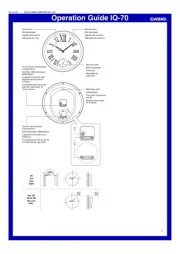
18 Juni 2025
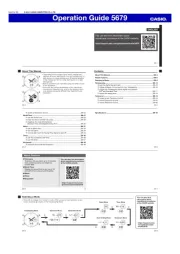
17 Juni 2025
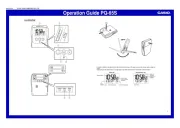
17 Juni 2025
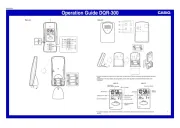
16 Juni 2025

16 Juni 2025
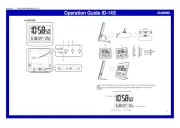
16 Juni 2025
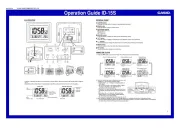
16 Juni 2025
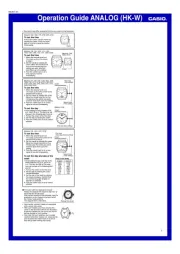
16 Juni 2025
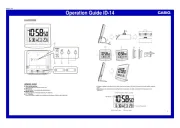
16 Juni 2025
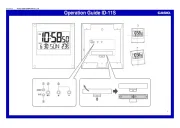
16 Juni 2025
Handleiding Horloge
- Fromanteel
- Jaguar
- Zenith
- Meister Anker
- HYT
- Xonix
- Brera
- Just
- Topcom
- Epson
- Sinn
- Westfalia
- Hamilton
- Michael Kors
- Skmei
Nieuwste handleidingen voor Horloge

5 Juli 2025

5 Juli 2025

4 Juli 2025

4 Juli 2025

4 Juli 2025

4 Juli 2025

4 Juli 2025

2 Juli 2025
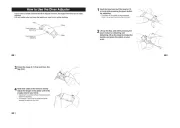
1 Juli 2025

21 Juni 2025